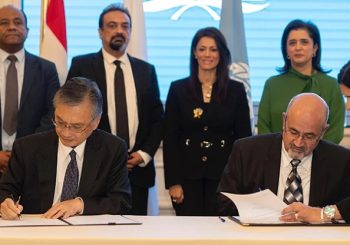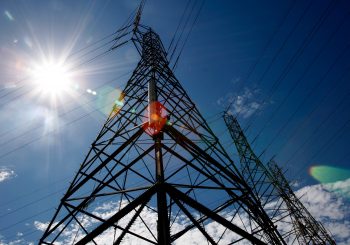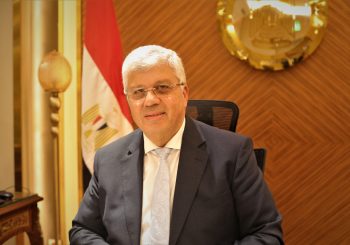Year after year, heavy rain causes severe damage to Cairo’s infrastructure. Among the most impacted are residents of New Cairo — a fairly new area of the capital and one of its most luxurious, based on real estate prices.
In April 2018, heavy rains resulted in the flooding of homes, garages, and cars, and caused electricity outages in the area. In March 2020, unprecedented damage arose from Egypt’s “dragon storm,” which caused 21 casualties across the country.
Despite government efforts to optimize Egypt’s preparedness for extreme rainfall events and to prevent human injury, New Cairo’s infrastructure remains vulnerable.
Last October, rain and hail storms hit large parts of the area, flooding several streets and causing traffic disruptions. On 9 January, pictures widely circulated, on social media, showing a car immersed in a pool of water on New Cairo’s Road 90 following heavy rainfall, an accident caused by repairs to the sewage network.
According to some experts, climate change, coupled with population growth, may continue to increase the frequency and severity of urban flash floods. These repeated incidents beg the question: what makes this new and upscale development so vulnerable to weather instabilities?
Climate Change and its Two-Fold Impact on Rain
Egypt has been facing threats of water scarcity for decades, owing to population growth, drought, and the Grand Ethiopian Renaissance Dam (GERD), among various other factors. It is widely understood that global warming decreases the frequency of rainfall and increases the odds of drought.
Less obvious is its relationship with incidents of extreme precipitation, explained as follows: warmer temperatures cause more sea and ocean water to evaporate into the air, which becomes filled with an unusually high amount of moisture. When this moist air moves over land or converges into a storm system, it can produce intense precipitation — such as that seen in recent years in Cairo.
Like most metropolises in the Middle East and North Africa (MENA) region, Cairo relies on its sewer and wastewater systems for drainage, owing to the infrequency of rainfall in the city and the hefty cost of building a separate rainwater drainage system.
The frequency of extreme rainfall in Cairo, however, has increased by 17 percent from 2000 to 2020, thereby overwhelming the city’s existing sewage infrastructure.
New Cairo’s sewer system is able to accommodate its annual mean rainfall of 13 millimeters with a maximum one-day rainfall of 25 millimeters, but was not built for the kind of weather it has seen in recent years. In 2018, rainfall reached over 40 millimeters across the neighborhood’s surface. In 2020, this number rose further to 56.5 millimeters, a downpour New Cairo’s infrastructure was unequipped to handle – as evidenced by the ensuing ravages.

Geography, Urban Expansion, and New Cairo’s Particular Vulnerability
New Cairo is built on arid desert land, which is characterized by lower absorbance, and therefore, greater propensity for flooding. Population growth in the area, exacerbated by internal migration, places excessive pressure on sewage infrastructure. This results in more frequent overflows and surface runoffs — instances in which there is more water than the soil can absorb.
Additionally, rapid urbanization has contributed to the blocking of several natural streamlines previously found in the area, further increasing surface runoff. Moreover, rapid urban expansion such as that witnessed by the area has been shown to contribute to more extreme rainfall, and to a rise in air temperature and vapor pressure, impacting the frequency and severity of extreme weather events.
The above factors exacerbate each other, simultaneously increasing the intensity of extreme weather events and the area’s propensity for severe infrastructural damage.
Sustainable Solutions for More Resilient Infrastructure
Following the events of 2020, one solution put forward by several members of parliament was rainwater harvesting, a means to simultaneously mitigate flooding and respond to water scarcity. The potential benefits of rainwater harvesting were also reiterated at COP27 in the broader context of water scarcity.
Another proposed solution is the adoption of ‘green infrastructure’ (GI) which takes the form of porous paving in car parking, pedestrian walkways, and service streets; gardens and soak-wells to infiltrate and drain water; and humps built to redirect water to designated catchment areas.
One study reported the positive impact of a GI pilot project implemented in parts of New Cairo, demonstrating that the target areas were more resilient to the 2020 storm as a result.
New Cairo is one example of how urban expansion into the desert can help reduce overcrowding in the Nile Delta. Nonetheless, this geography contributes to making its infrastructure deeply vulnerable to climate change and the ensuing weather instability which it was not built to handle.
In the past years, experts have proposed various sustainable solutions to mitigate extreme rainfall’s impact on the area’s infrastructure. For the time being, however, neither rainwater harvesting nor green infrastructure have been implemented to full scale in the area, creating concern as to the impact of future extreme rainfall events.







Comments (2)
[…] Explainer: Why is New Cairo so Vulnerable to Rain? […]
[…] Explainer: Why is New Cairo so Vulnerable to Rain? […]